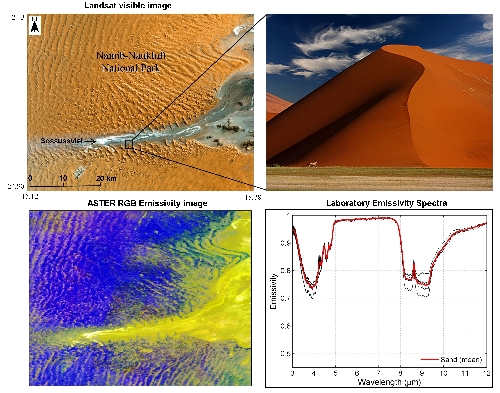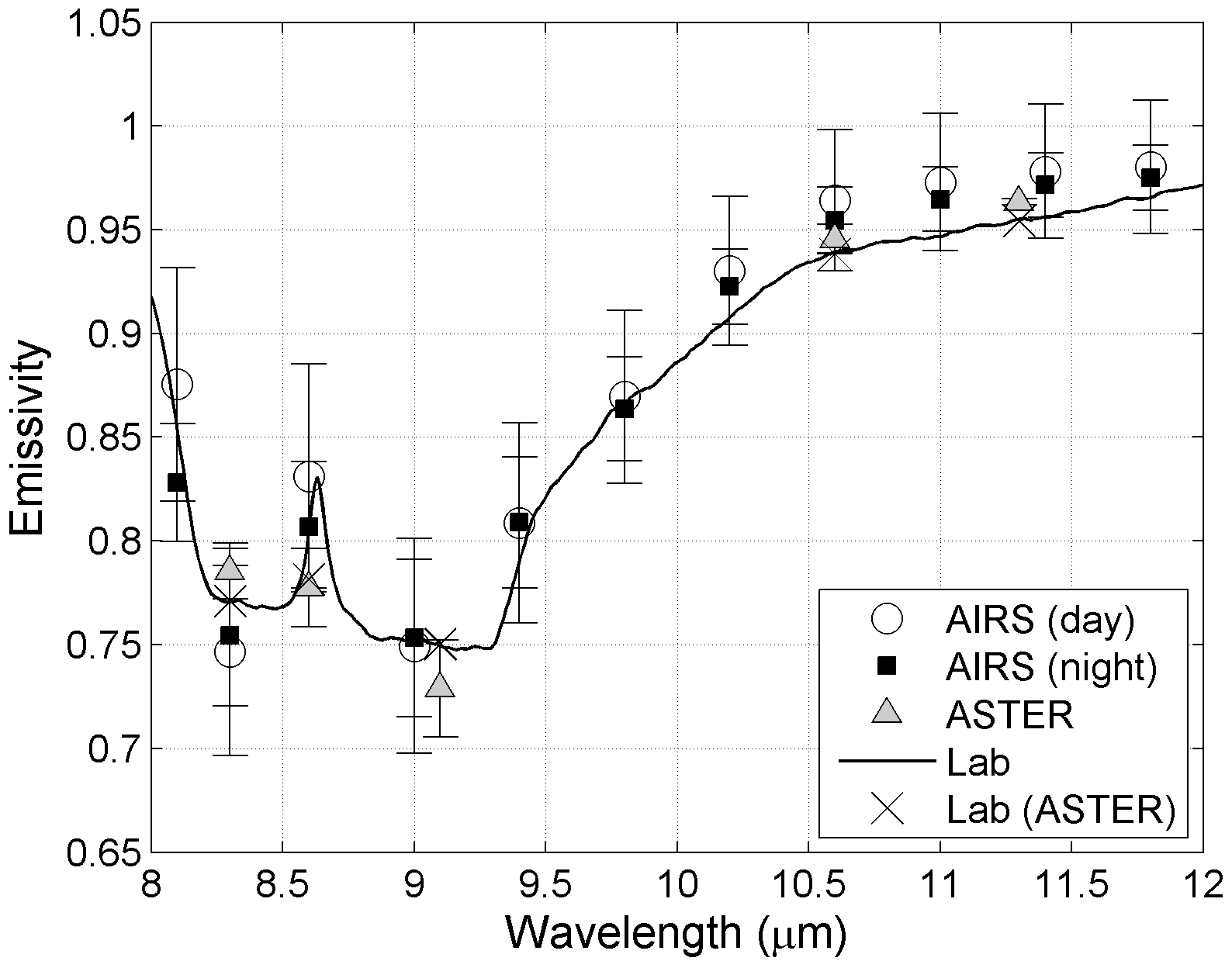Namib Desert
The Namib sand sea in Namibia is bordered to the north by the Kuiseb river, the south by the Orange river, the west by the Atlantic Ocean, and the east by the South African escarpment, and forms part of the Naukluft-Namib National Park that occupies some 34,000 km² and comprises some of the oldest (~55 million years) and highest (up to 300 m) dunes in the world. The Namib is a hyper-arid ecoregion and receives a low and highly unpredictable annual rainfall of between 5 mm in the east to 85 mm in the west [Lovegrove, 1993]. The vast expanse of shifting dunes is almost completely devoid of vegetation except for sparse perennial grasses [White, 1983].
Details of the validation site at Namib-Naukluft National Park are shown below including a Landsat visible image of the surrounding area (top left); photograph of a ~300 m high dune at Sossussvlei (top right); ASTER RGB emissivity image displaying bands 10 (8.3 µm, 1205 cm-1), 12 (9.1 µm, 1099 cm-1), and 14 (11.3 µm, 885 cm-1) as red, blue and green respectively (bottom left); laboratory measured emissivity spectrum of eight sand dune samples (bottom right). Dark blue/purple colors in the ASTER RGB image have high spectral variation due to quartz sand, and lighter yellow and white colors have higher emissivities and less contrast due to vegetation or presence of higher clay and iron-oxide content in the sand. Note: Landsat image Credit: U.S. Geological Survey Department of the Interior/USGS.
.

The image below shows AIRS and ASTER mean emissivity spectrum in the thermal infrared (TIR) 8-12 µm (1250-833 cm-1) region with the errorbars showing the temporal variation in emissivity at the two sites from 2002-2006. The solid line is the lab emissivity spectra at full wavelength resolution, while crosses are the lab spectra convolved to the ASTER spectral response function.
.
